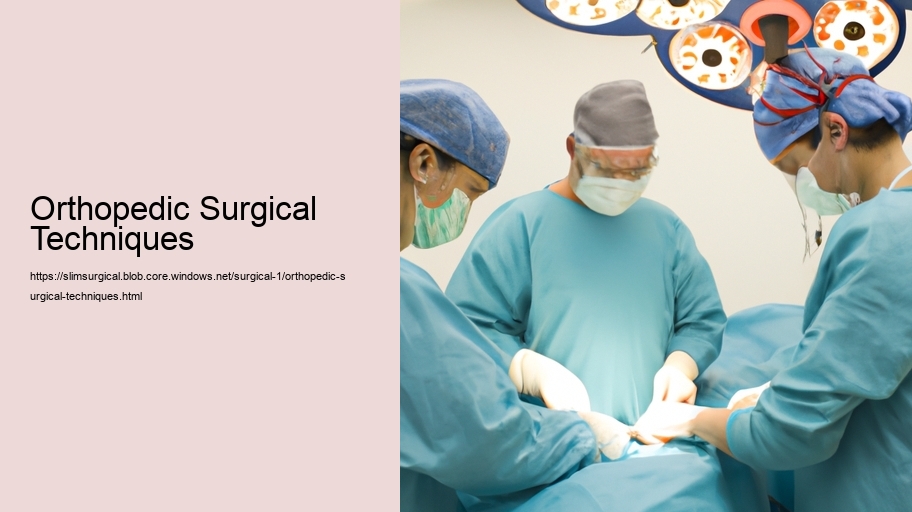Orthopedic Surgical Techniques: A Journey Through Innovation and Precision
The medical field of orthopedics is a testament to the incredible progress humanity has made in understanding and treating the musculoskeletal system. Orthopedic surgical techniques have evolved from primitive bone-setting to sophisticated procedures that restore function, alleviate pain, and improve the quality of life for millions. In this essay, we will delve into the intricate world of orthopedic surgery, exploring the methods, advancements, and challenges that define this dynamic specialty.
The bedrock of orthopedic surgery lies in a thorough understanding of anatomy, physiology, and biomechanics. Orthopedic surgeons must navigate complex structures such as bones, joints, muscles, tendons, and ligaments, each with its unique function and healing process. The techniques employed in orthopedic surgery are as diverse as the conditions they treat, ranging from minimally invasive arthroscopic procedures to extensive reconstructive surgeries.
Arthroscopy, one of the most significant advancements in orthopedic surgical techniques, allows surgeons to view, diagnose, and treat joint problems through small incisions. Using a camera and specialized instruments, surgeons can address issues such as torn cartilage, ligament reconstruction, and joint debridement with minimal disruption to surrounding tissues. This approach not only reduces the risk of infection and postoperative pain but also shortens recovery time, enabling patients to return to their daily activities more quickly.
Joint replacement surgery, another cornerstone of orthopedic procedures, has revolutionized the treatment of severe arthritis and other debilitating joint conditions. Hip and knee replacements, in particular, have seen remarkable improvements in the design and materials of prosthetic implants. The use of durable, biocompatible materials and the precision of computer-aided design and manufacturing ensure that artificial joints can withstand the rigors of daily use and closely mimic natural joint movement.
In the realm of spinal surgery, orthopedic surgeons collaborate with neurosurgeons to address conditions such as herniated discs, spinal stenosis, and vertebral fractures. Techniques such as spinal fusion, laminectomy, and the more recent development of artificial disc replacement help to stabilize and decompress the spine, relieving pain and restoring mobility.
The treatment of fractures remains a fundamental aspect of orthopedic surgery. Modern internal fixation devices, such as plates, screws, and intramedullary nails, have enhanced the ability to align and stabilize broken bones. External fixation devices also play a crucial role, particularly in complex fractures or when internal fixation is not feasible. The advent of locking plate technology and the use of bone morphogenetic proteins exemplify the continuous search for better fracture management solutions.
Despite these advancements, orthopedic surgical techniques are not without challenges. The risk of complications, such as infection, blood clots, and implant failure, persists. Moreover, the rise of antibiotic-resistant bacteria poses a significant threat to the success of orthopedic implants. Surgeons must also navigate the complexities of individual patient anatomy, comorbidities, and the expectations of an increasingly active aging population.
Research and innovation continue to push the boundaries of what is possible in orthopedic surgery. The integration of robotics and computer navigation provides surgeons with unprecedented precision, potentially reducing the margin of error and improving outcomes. Tissue engineering and regenerative medicine hold the promise of repairing or regenerating damaged tissues, potentially reducing the need for invasive surgical interventions.
In conclusion, orthopedic surgical techniques represent a fusion of art and science, requiring both technical skill and deep compassion. As surgeons endeavor to repair the intricate machinery of the human body, they are guided by a commitment to restoring function and enhancing the lives of their patients. With each passing year, the field of orthopedic surgery continues to evolve, driven by the relentless pursuit of excellence and the profound desire to heal.
